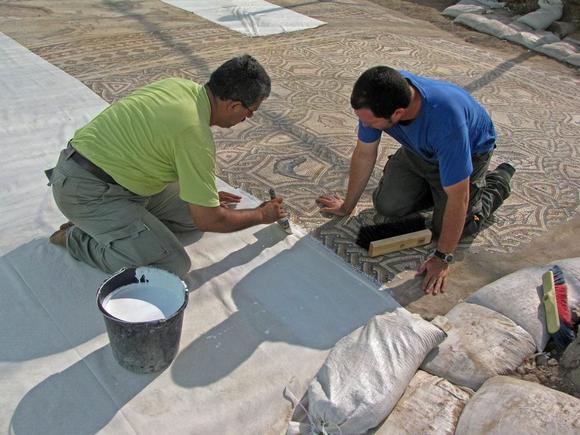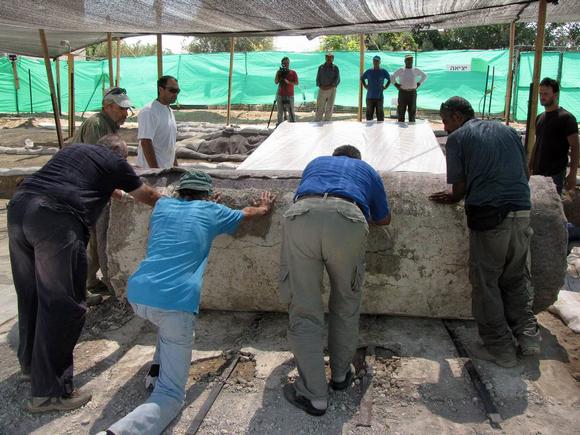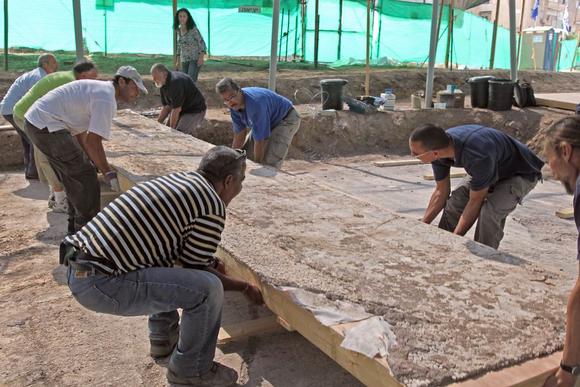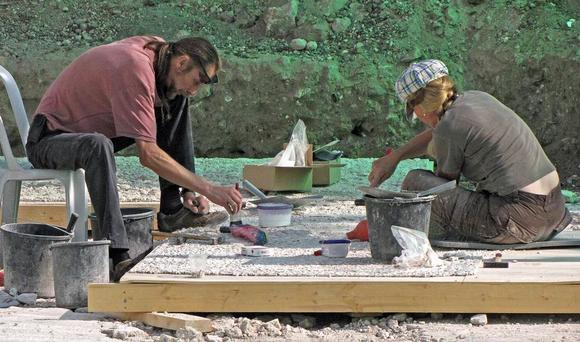Lifting the mosaic
The mosaic was divided in 30 sections in order to minimize loses during lifting and conservation. This also provided a relatively easy way of reassembling the fragments on the new supports.
1. Facing – two layers of gauze and one layer of cotton fabric were glued with PVA glue.
 Facing of the mosaic (gluing gauze and cotton fabric on the surface)
Facing of the mosaic (gluing gauze and cotton fabric on the surface)
2. Detachment – a combined method, using roller for the detachment and immediate transfer to wooden platforms, was used.
 Lifting of the mosaic (using roller)
Lifting of the mosaic (using roller) Only in one case (the long panel No 10) the “sandwich” method was used to flip the panel. The operation was extremely difficult to accomplish because of the quality of the Roman mortar, which was hard to cut through, and the dimensions and weight of the sections (maximum surface 16 sq. meters and weight approximately 1000kg). The tesserae that became detached during the lifting (very limited number) were glued back in their original places before the end of each day’s work.
 Lifting of the mosaic (sandwich system)
Lifting of the mosaic (sandwich system) 3. Cleaning of the backing mortar – mechanical cleaning with chisels and hammers and micro vibrating pneumatic tools
 Lifting of the mosaic – mechanical cleaning of backing mortar
Lifting of the mosaic – mechanical cleaning of backing mortar Conservation: 1 | 2 | 3 | 4 | 5 | 6 | 7 | 8 | 9 | 10 | 11 | Next page




